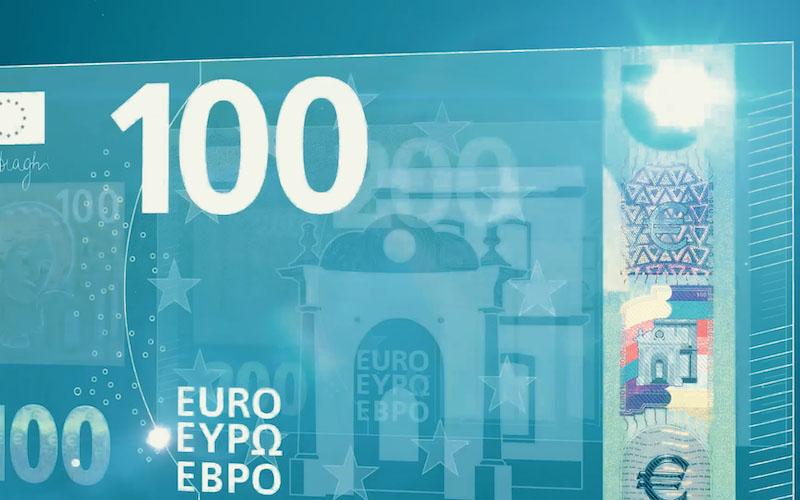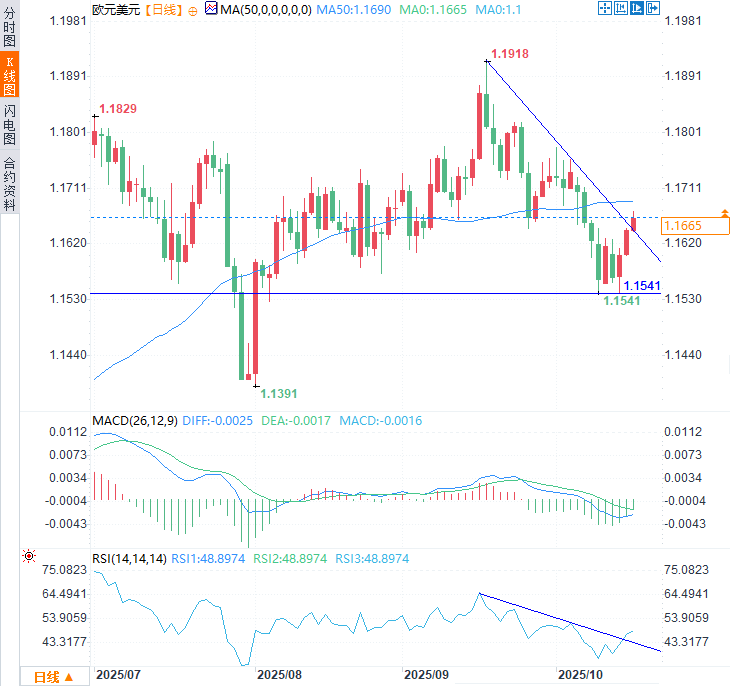The Fed's dovish tone is resounding! The dollar's foundation is shaken, and euro bulls have a strong backer.
2025-10-16 11:13:46

Dovish Powell halts dollar's rebound
The euro has rebounded strongly against the dollar in the past three trading days, coinciding with Federal Reserve Chairman Jerome Powell's speech at the National Association for Business Economics earlier this week. Powell continued to warn of downside risks to the U.S. labor market, but this did little to weaken the market's pricing in another rate cut this month.
"While the unemployment rate remained low in August, job creation has slowed sharply, likely due in part to slower labor force growth due to immigration and declining labor force participation," Powell said. "In this less dynamic and somewhat slack labor market, downside risks to employment appear to have risen."
While Powell's speech did not significantly change the market's near-term expectations for the federal funds rate, it did push down longer-dated Treasury yields, sending the policy-sensitive two-year yield to levels not seen since May.
While the euro against the dollar hasn't shown a consistent correlation with absolute US Treasury yields or the interest rate differential between the euro and the dollar over timeframes of one week to one month, it's hard to ignore the continued sell-off in the dollar since Powell's comments about a possible pause in quantitative tightening. This likely fueled the euro's rebound against the dollar, despite Eurozone economic data consistently underperforming expectations.
Despite upcoming speeches from several officials, including European Central Bank President Christine Lagarde, Eurozone economic data is relatively light, including the final September inflation reading, which offered few surprises. In the United States, the continued government shutdown has left a scarcity of tradable economic signals, meaning speeches by Federal Reserve officials are the most likely catalyst for fundamentals.
Technology Outlook
Looking at the daily EUR/USD chart, we can see that on Wednesday the pair broke out of its downtrend from the highs of September 17. The trigger for this bullish move was the failure of the bears to effectively break through the support level of 1.1541, the low of October 9.
On the upside, EUR/USD has recently shown a weak correlation with its 50-day moving average (1.1690), with periods of interaction and divergence. Nevertheless, this moving average remains an initial resistance level that cannot be ignored. A successful break above this level would open the way for bulls to target the area above 1.1750, where selling activity occurred late last month and early October.
On the downside, we need to pay close attention to the support level of 1.1541, the low point of the double bottom pattern formed earlier this month. If it is effectively broken, it may push the short-term trend of the exchange rate to a bearish one.
In terms of directional bias, both the RSI (14) and MACD indicators are showing neutral momentum signals, which makes short-term price action more relevant. Although the RSI (14) has broken through the downward trend line of the past month, this only indicates that the bearish momentum is weakening and does not send a clear bullish signal.

(Euro/USD daily chart, source: Yihuitong)
At 11:13 Beijing time, the euro was trading at 1.1664/65 against the US dollar.
- Risk Warning and Disclaimer
- The market involves risk, and trading may not be suitable for all investors. This article is for reference only and does not constitute personal investment advice, nor does it take into account certain users’ specific investment objectives, financial situation, or other needs. Any investment decisions made based on this information are at your own risk.





















